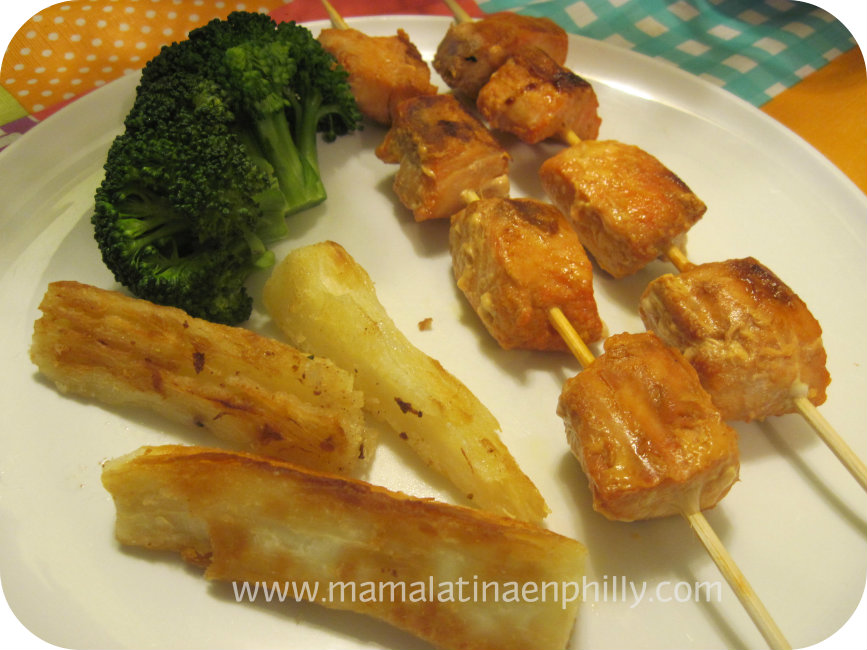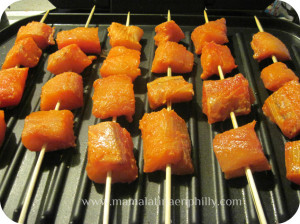And what is an anticucho?
There are several definitions about the origin of the word anticucho, however, most of the information found on the Web agrees that it is a word that comes from the Quechua anti=in front or anti=walk and cuchu=cut.
This dish originates in Peru, and as a Peruvian, I'll define it in a nutshell: Anticuchos are pieces of meat on a stick, grilled.
In Peru, the traditional anticucho is made with beef heart marinated in a special mixture and cooked over charcoal. However, if you wander around Lima a few times, you'll find anticuchos made with beef, chicken, and, why not, even fish.
Every year during Holy Week, like most Peruvians, my mother followed the Catholic tradition of not eating red meat or poultry on Good Friday, and she found a way to prepare fish-based dishes. One we really liked was anticucho de pescado (fish on sticks). And although my recipe isn't identical to the ones she prepared at home, I, like my mother, manage to prepare the Good Friday menu. Only instead of Peruvian toyo, I use some type of fish suitable for grilling, and instead of cooking it over charcoal (because it's still very cold here), I have to use my kitchen grill. Anyway! You have to be resourceful, right?
This is the recipe for my anticucho, fish on a stick, kabobs, brocheta, fish on a stick or whatever you prefer to call it.

Fish anticuchos
1 1/2 pounds of fish (swordfish, tilapia or mahi mahi)
1 tbsp garlic
3 tbsp soy sauce
3 tbsp white vinegar
Salt
Pepper
Half a packet of Goya Seasoning with achiote (optional)
Cut the fish into chunks and add all the ingredients, stirring gently. Let it rest for at least an hour.
Place the pieces on sticks and grill them, being careful not to overcook them. Cooking time may vary, but 10 minutes or less on a hot grill is enough to ensure they come out juicy.

It can be served with fried yuca and broccoli. If you have a spicy sauce on hand, it's the perfect accompaniment to this dish.
Enjoy!